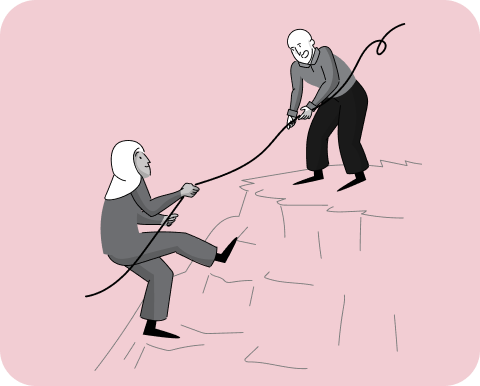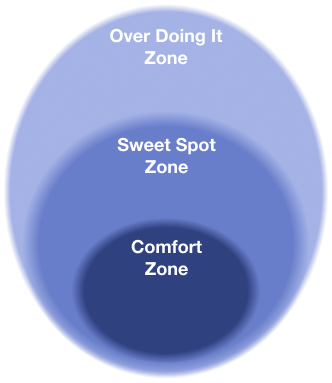Getting Back to Your Life
Getting Active
The good news is that you do not need to be symptom- free to start increasing your activities and it is now known that it is also okay if your symptoms get a bit worse when doing non-contact activities. It’s important to think about being gradually more active as treatment, not something you start doing after you are fully recovered (and your symptoms are gone).
Even if you don’t feel like it, you can help your recovery and feel better (physically and emotionally) if you start doing stuff that’s important to you and you feel good about.
- Start with short chunks of activity with rest breaks in between.
- Keep it simple and break down big tasks/activities into a bunch of smaller ones.
- Gradually return to pre-concussion activity level over time by making the activity chunks longer and more challenging and make the rest breaks shorter and less frequent.
- It can also be helpful to mix up activities that take more thinking with activities that are relaxing.

Key Principles for Return to Activities: Frequency, Duration, and Intensity
Remember: it is important to avoid any high risk, high velocity, high impact, and high balance sports (like skiing down a black run or mountain biking down a single-track trail) while you are recovering.
- Before safely re-introducing an activity into your routine, first try the activity to find what you can tolerate. You can do so by making a note of the level of activity you can tolerate: how often (frequency), how long (duration), and how challenging (intensity). Remember, it is okay if your symptoms get a little bit worse but if they are severely worse or you cannot tolerate the symptoms this is a sign to do a little less or modify the activity.
- Gradually increase the intensity of your activities by following this formula, with the goal of increasing your heart rate to help your brain heal: increase frequency (how often you do something) first, then duration (how long you do it), and then intensity last.
Here’s an example for doing computer work. Please remember, everyone’s gradual (also called “graded”) return to activity plan will be unique.
- Step 1: Make a note of what you can tolerate. For example, 15 mins of easy computer work before feeling a worsened headache.
- Step 2: Make an action plan to gradually increase the frequency. For example, plan to be on the computer, for simple tasks, 2 times per day for 15 mins, 4 days per week.
- Step 3: Stay at this level for 1-2 weeks or until you feel that you are 70% confident with this level of activity, and then increase the frequency again.
- Step 4: Increase frequency again. For example, increase the frequency to 4 times a day on the computer at 15 minute slots, 5 days per week.
- Step 5: Increase frequency again. For example: plan to be on the computer 5 times per day, for 15 mins, 5 days per week.
It can be helpful to plan this out using your phone or a day planner to track increases. Some youth find it helpful to have it on a white board in their room while others prefer a digital plan.
Then over time, you will want to gradually adjust the duration and intensity of using your computer.
For example, adjust the duration of the plan to be on the computer for 20 minutes each time. Then, gradually increase the complexity of the work you do each time you are on the computer.
But, remember to take breaks when you are on the computer. A helpful hint is to continue to work in 30-45 mins chunks even when you are feeling better.
Take it One Step at a Time
When gradually increasing your activities, it can also be helpful to look at the concept of the “3 activity zones” - the “comfort zone”, the “overdoing it zone”, & the “sweet spot zone”.

Comfort Zone
The inner circle is the “comfort zone” where you may be resting or not doing much activity so that you have no symptoms. However, too much time in this zone can cause physical deconditioning, social isolation, low mood and less tolerance to light and noise.
Overdoing it Zone
The outer circle is the “overdoing it zone” where you push through your symptoms so that they become hard to tolerate. You are not harming your brain, but you don’t feel so great.
Sweet spot zone
Ideally, when increasing your activity levels, you want to spend most of your time in the “sweet spot zone,” where you are doing a bit more or doing something that’s a bit challenging, but can still tolerate the symptoms.
Taking a step out of your comfort zone is a step towards recovery.
It can be helpful to think of the analogy of climbing a staircase, and taking it one step at a time. You want to be 70% confident you can make the next step BEFORE moving to that step.